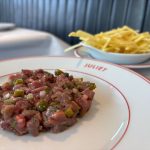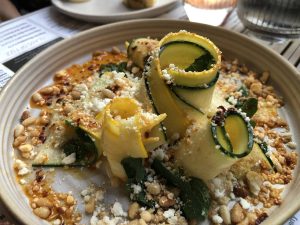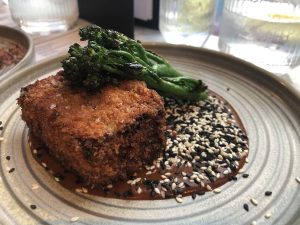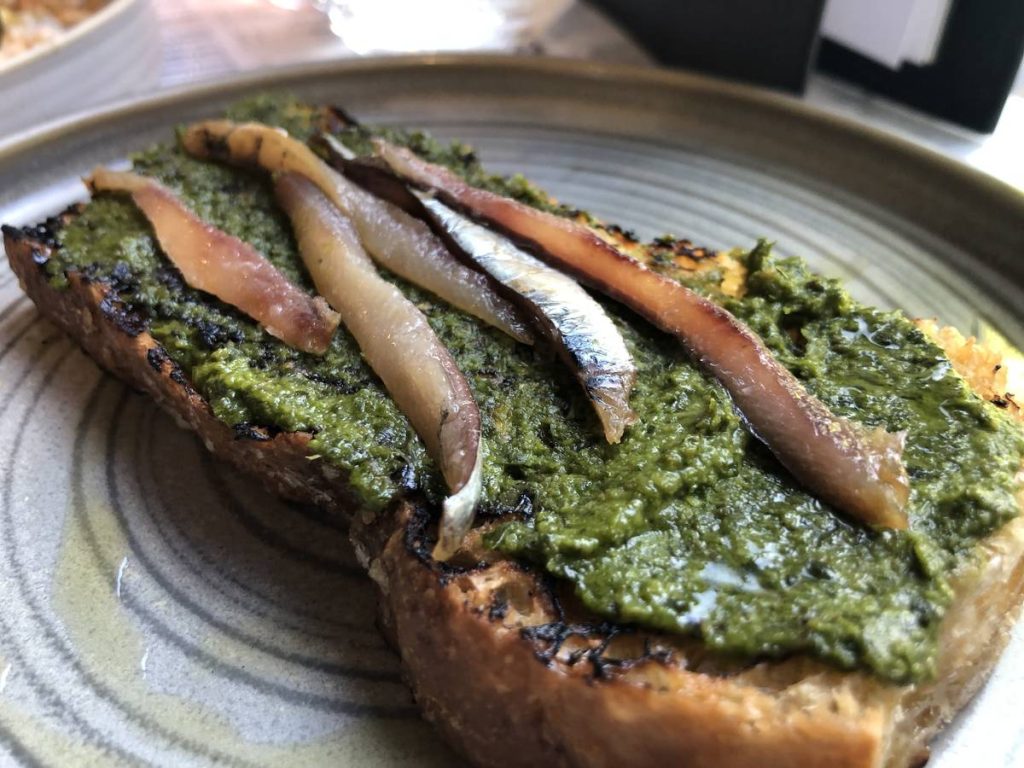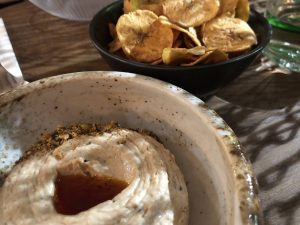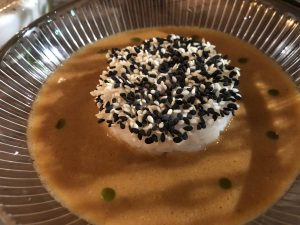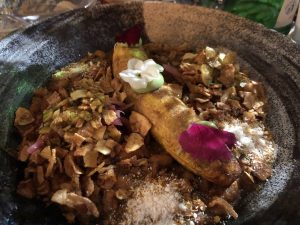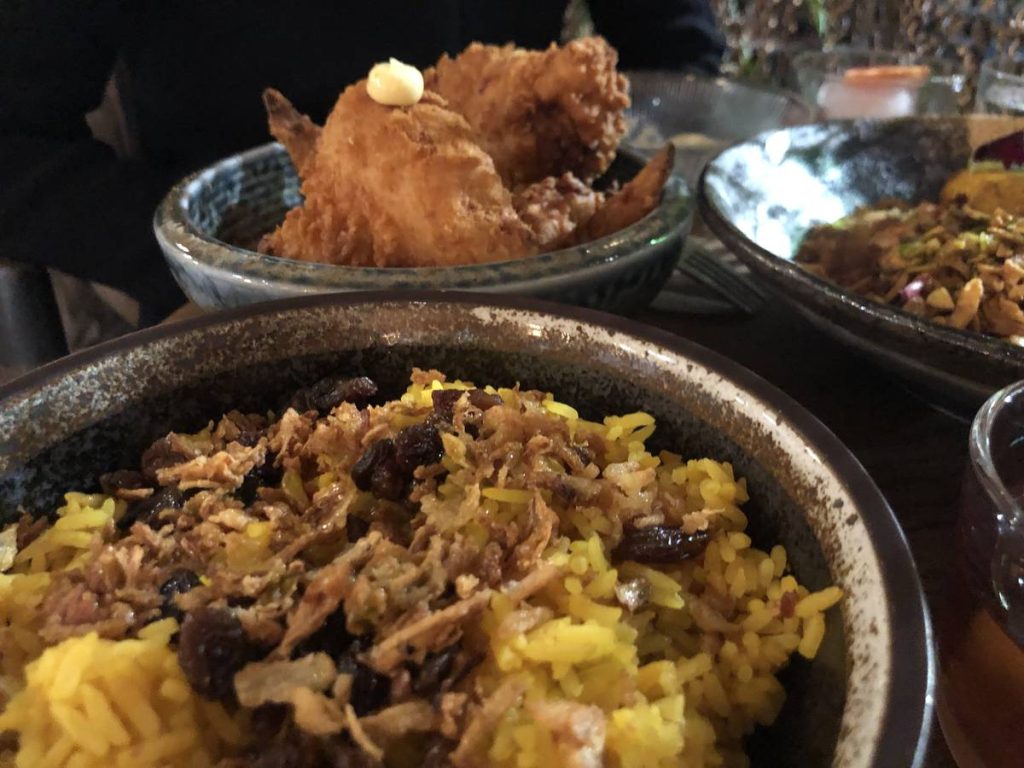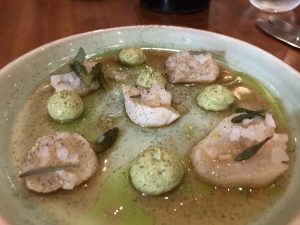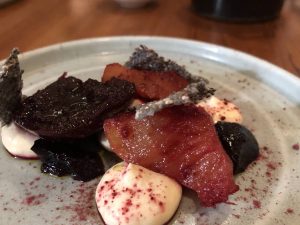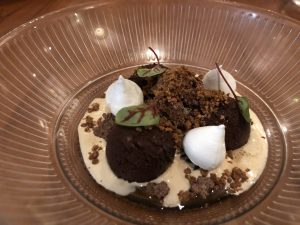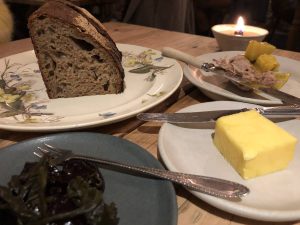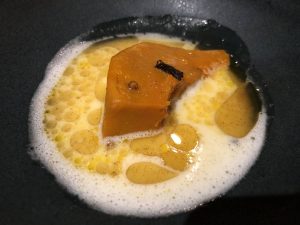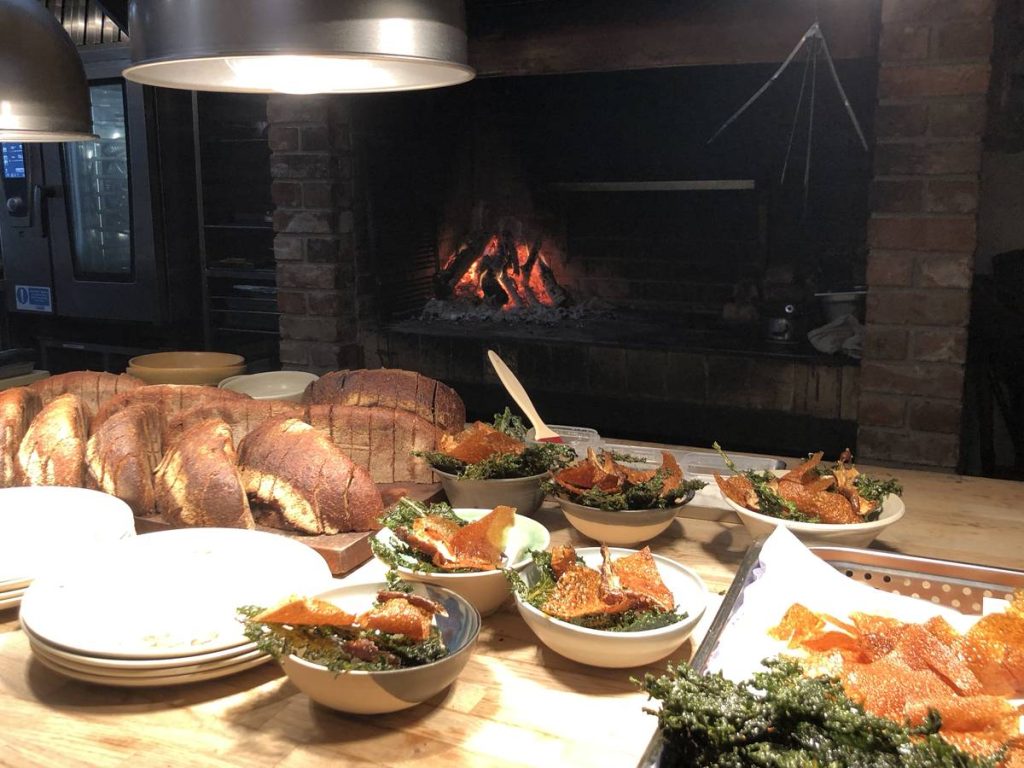The Flint House is fairly new, but it’s by Ben McKellar who has been building the little Gingerman group of restaurants for maybe twenty years now. Flint House is in the heart of the Laines, and it’s a small plate place, with the by-now-familiar influence of Asian ideas and ingredients all over the modern British menu. It’s all bloody good stuff, though.
First up, some snacks. Pickled shiitake in a big ball of crisp tempura batter is obviously just filthy goodness, but they’ve got great fry-technique here and there’s nothing oily, the taste is clean, hot from the fryer. The sweetcorn fritters are if anything even better, the batter this time a deep nutty brown with the taste to match, good jalapeno mayo to dip in. But then the smoked anchovies on toast come along and blast these great snacks into last week! Smoked, the anchovies are less fierce than usual but packed with flavour. The green sauce is kinda salsa-verde-ish. The toast is focaccia, lovely springy-crumbly texture and so very good.Smoky char-grilled mackerel, the skin all crisp and black, does very nicely with a dollop of smooth dark brown spicy pear puree and a bit of celeriac remoulade. We also have a salad of raw courgette ribbons dressed with pine nut, mint, feta and aleppo chillies, a really punchy combination on the cool background of courgette. The block of everso-slow-cooked ox cheek in panko is just about the best thing ever, the meat just so soft and immensely beefy in flavour. It’s on a lake of shiny miso emulsion with a chilli heat that is absolutely packed with sharp umami flavour.
We’ve got no room for pud. This blast of full-flavoured small plates with plenty of punch, sweetness, bitter notes and umami is more than enough. Maybe £35 each before drinks? There’s a good drink list here, full of interesting stuff. Flint House has immediately become one of our go-to places for when we’re next down in Brighton.


